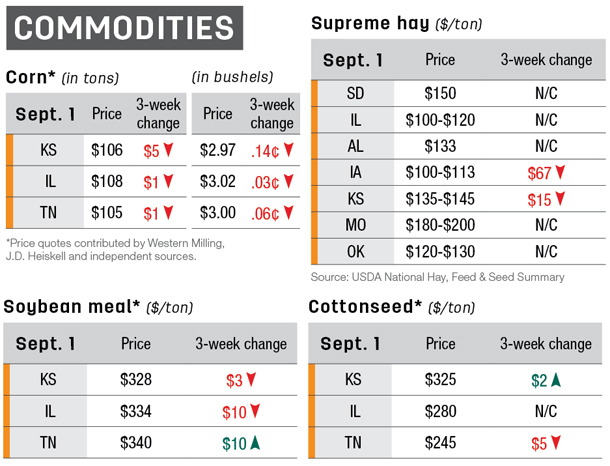Forage analysis is a tremendous asset for all cattlemen, whether on raised or purchased forage. Once the analysis is in hand, a winter supplementation strategy can be more accurately developed for the needs of each management group.
It seems most of the issues involving poor conception and even disease stem from feeding feedstuffs that have not been properly analyzed. Please don’t disregard the need to analyze baleage, particularly if the moisture level was questionable. Baleage with high moisture content (greater than 60 percent) is suspect for clostridial fermentation.

Forage that ferments in an overly wet environment has the potential to leave producers wondering why calves have poor gains or cows have surprisingly poor body condition, even though the nutrient analysis looks incredible. If the nutrient analysis reveals high moisture, a fermentation analysis is a sound precaution.
Well-managed baleage is a tremendous asset to cattlemen in the region. However, good baleage can only come from good hay.
Winter annuals such as ryegrass, small grains and alternatives (such as brassicas and legumes) can potentially salvage a drought-stricken summer. Proper planting, well-timed fertilization and a whole lot of ideal weather can yield tons of forage. Waiting to graze ryegrass until 6 to 8 inches tall helps promote increased tonnage and a prolonged growing season.
Spring calving
Hopefully those straggling open females and other “market cows” have made the trip to town. Now is a great time for developing that much-needed record system. Online versions with accessibility through most any Internet-capable device can be a useful asset that’s not as easily lost.
Consult with your veterinarian about your vaccination program for pre-calving. There are some good products that deter scour issues.
Fall calving
Implanting male calves and any non-replacement females is a $4-to-$1 return on your investment. Analyze your bull battery. Schedule a BSE and prepare them with supplemental feed prior to the season.
Segregate 2-year-olds and any other young cows as needed for pre-breeding supplementation. This could make the difference in their lifetime productivity. ![]()

-
Jason Duggin
- University of Georgia
- Beef Extension Specialist
- Email Jason Duggin







